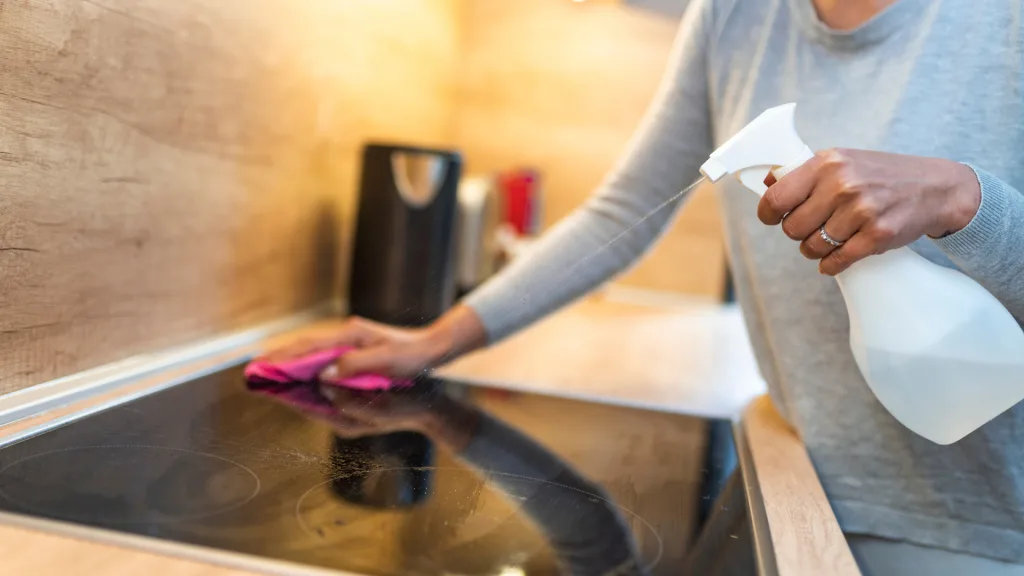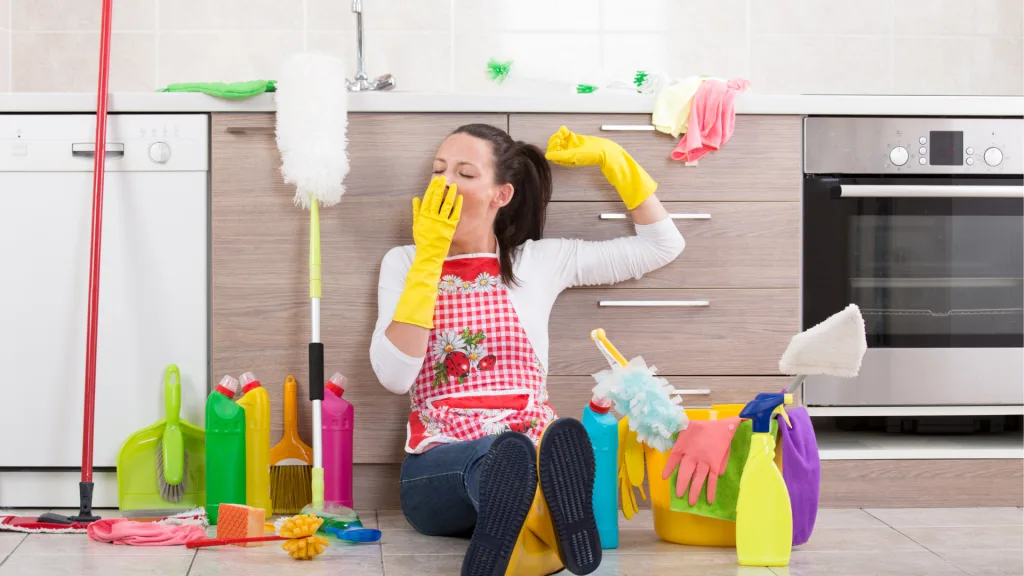No matter how much you clean, there’s a good chance that germs are hiding on many surfaces in your kitchen. Just because you can’t see them doesn’t mean they’re not there.
However, not only are they likely living there, they’re likely thriving and multiplying. If you’re not careful, these pesky bacteria could cause major health issues for you and your family.
Today, we’re sharing seven nasty places in your kitchen where germs are cutting loose.
Let’s check it out!
Did You Know Your Kitchen Harbors Germs?
Even if your kitchen looks like something straight out of Good Housekeeping, there’s a good chance it’s one of the nastiest rooms in your house. A 2017 study supports this claim, as it found 362 different types of bacteria living in a used sponge. It also found that more than 82 billion microorganisms lived in just one cubic inch of space in the room.
Yes, that scrubber you use to scour dishes and other surfaces is filled with germs. And don’t trick yourself into thinking that it’s not laden with them because you clean it. The same study found that microwaving, boiling, and running the sponge through a dishwasher provided little benefits. Any bacteria simply grew right back.
Kitchens have many surfaces that get touched, and people often do a terrible job getting germs off their grubby mitts. In addition, towels and other rags don’t get exchanged as often as they should. So even if you clean your hands correctly, drying them off on a dirty towel will only cover them with more microorganisms.
Pro Tip: Keep your home fresh and clean by discovering Does Vinegar Eliminate Mold?

7 Things Germs Love in Your Kitchen
No matter how hard you try, some items attract more germs than others. Let’s get started and look at seven of the grossest things in your kitchen!
#1 Germs in Your Spice Cabinet
When you think of the dirtiest part of your kitchen, the spice cabinet is likely the last thing you consider. However, researchers have discovered that the spice cabinet is one of the offenders of cross-contamination in the kitchen. That’s because chefs frequently add a variety of seasonings to meats and poultry while preparing meals.
Experts state that the best way to avoid a spice cabinet full of disease is to wash your hands before and after cooking and multiple times during the preparations. If you touch a jar after touching raw meat or eggs, you should wipe it with an antibacterial wipe.
If you’re feeling the urge to wipe down all of your spices, finish reading this article first. There may be other things you need to clean!
#2 Sponges and Dish Cloths
You use sponges and dishcloths to wipe up many messes. Unfortunately, they don’t always get as clean as they should. As a result, you’re likely wiping your hands, dishes, and countertops in your kitchen with sponges and dish clothes filled with germs.
Salmonella and E. coli can live in rags and sponges. In fact, the National Sanitation Foundation International found that 75% of rags and sponges contained some bacteria. The best way to sterilize them is to microwave them on high for 30 seconds. However, while this will kill most of them, they won’t be gone for good.
If you want to reduce the chances of cross-contamination from sponges and dishcloths, invest in paper towels. These are great for cleaning up messes, and you can toss them in the trash when you’re finished. This way, the paper towel and the bacteria end up in the garbage, not on other surfaces.

#3 Anything With a Touchpad in Your Kitchen
As we mentioned, people do a terrible job washing their hands. In addition, they may errantly touch surfaces covered in bacteria while cooking. The touchpad surfaces on microwaves, refrigerators, and ovens are some of the filthiest spots in a kitchen.
It might surprise you how many different touchpads and knobs are around your kitchen. The best way to avoid spreading germs from these surfaces is to clean them using an antibacterial wipe regularly. This will kill them and help ensure that you don’t accidentally end up with anything gross on your fingers from last night’s dinner.
#4 The Kitchen Sink
Your kitchen sink can be a playground for germs. You may wipe your sink down after doing dishes, but that’s not nearly enough. If you don’t scrub it regularly, you could end up with a stinky sink filled with harmful microorganisms. That’s the last place you want to be washing dishes.
To ensure your sink gets as clean as possible, you should sterilize it weekly. The best way to accomplish this is to use a mixture of bleach and water together and let it sit for 20 to 30 minutes, then give it a good scrubbing. It’s also a good idea to pour some garbage disposal cleaner down the drain to help kill any germs in there.
#5 Cutting Board and Knives
Cutting boards and knives can help you slice and dice meats for a delicious dinner. However, depending on the cutting board and utensils, you could spread germs. No matter how good of a job you do cleaning them, these can be some of the scariest items in a kitchen.
Cutting boards and knives are breeding grounds for cross-contamination. This is because harmful bacteria can find their way into the small crevices and slits in the blades. Using different surfaces for meat, poultry, and seafood is a good idea to avoid potential issues. When finished, you should thoroughly wash them in hot, soapy water and then dry them with a paper towel.

#6 Food Storage Containers
You may have a cabinet full of storage containers, but they could spread germs in your kitchen. Many of these bins, especially those with a rubber seal, are known for containing yeast and mold. In addition, you should only use ones with the NSF Protocol P386 stamp on them. That means they’re rated for food, and you know they’re safe for repeat use.
To avoid spreading disease through your Tupperware, you should wash them immediately after use. When possible, remove rubber seals, clean them thoroughly, and dry them before putting them away. You don’t want moisture to hang around and attract bacteria.
#7 Your Hands Spread Germs in the Kitchen
Unfortunately, hands are one of the top sources of germs in the kitchen. You pass them from one place to the next, and then you touch your face, mouth, eyes, or nose and continue spreading them all over. You end up handling many of the surfaces covered in filth.
The best way to deal with gross hands in the kitchen is to clean them often. We all quickly realized the importance of washing our grabbers over the past several years. This is one skill we should master ASAP.
When cooking a meal, you should ensure you and anyone helping you thoroughly wash up at the start. In addition, it’s not a bad idea to do it repeatedly throughout preparing the meal. You should immediately scrub your hands when dealing with meat, seafood, or other foods that are potentially filled with bacteria.
Pro Tip: Clean your kitchen with one of these Best (and Worst) Home Mops.
Banish Those Germs From Your Kitchen
You may pride yourself in keeping a clean house and kitchen, but germs and bacteria are stubborn. Even the best slip up from time to time and are guilty of one of the activities we’ve shared that can spread disease in the kitchen.
However, to avoid any potential health issues resulting from cross-contamination, you should be as consistent as possible when sterilizing things. This will help you avoid cross-contamination. Trust us, food poisoning is nothing to laugh about and isn’t something you want to experience.
Discover the Best Free Camping Across the USA
To be honest with you, we hate paying for camping. There are so many free campsites in America (with complete privacy).
You should give it a try!
As a matter of fact, these free campsites are yours. Every time you pay federal taxes, you’re contributing to these lands.
Become a FREE CAMPING INSIDER and join the 100,000 campers who love to score the best site!
We’ll send you the 50 Best Free Campsites in the USA (one per state). Access the list by submitting your email below: